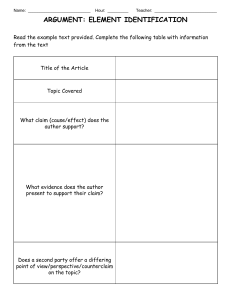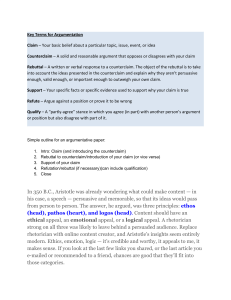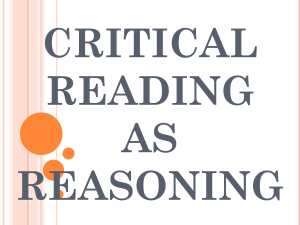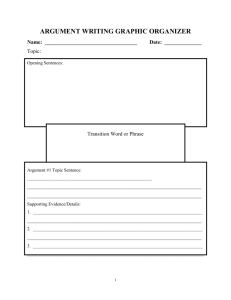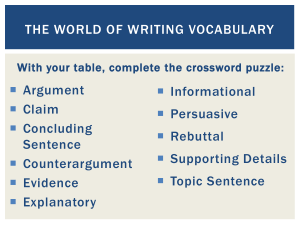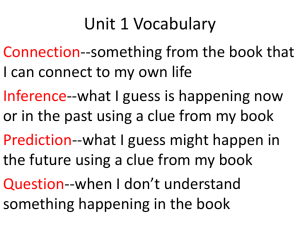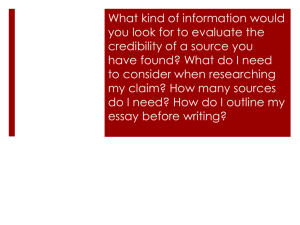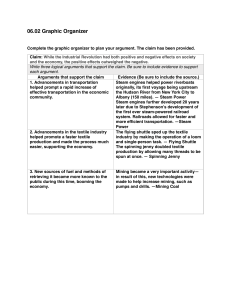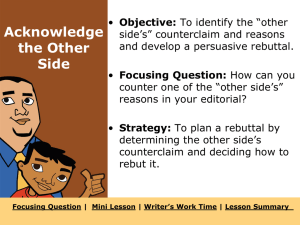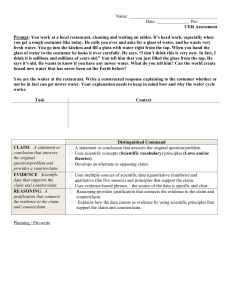Argument Writing Project
advertisement
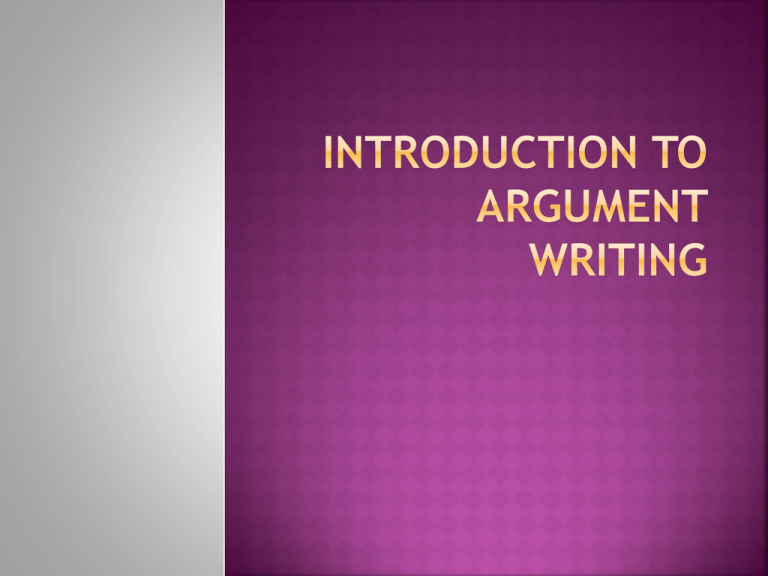
An argument is a reasoned, logical way of demonstrating that the writer’s position, belief, or conclusion is valid. Arguments seek to make people believe that something is true or to persuade people to change their beliefs or behavior. An argumentative essay A persuasive essay Makes claims based on factual Makes claims based on factual evidence evidence Makes counter-claims. The author takes opposing views into account. May make claims based on opinion May not take opposing ideas into account Neutralizes or “defeat” serious opposing ideas Persuades by appealing to the Convinces audience through or by relying theaudience’s merit andemotion reasonableness of thethe claims and proofs on character or credentials of offered the writer – less on the merits of Often compares texts or ideas to establish a position Logic-based Persuades by appealing to the audience’s emotion or by relying on the character or credentials of the writer – less on the merits of her or his reasons and evidence. Emotion-based Claim – Your basic belief about a particular topic, issue, event, or idea Counterclaim – A solid and reasonable argument that opposes or disagrees with your claim Rebuttal – A written or verbal response to a counterclaim. The object of the rebuttal is to take into account the ideas presented in the counterclaim and explain why they aren’t persuasive enough, valid enough, or important enough to outweigh your own claim. Support- Your specific facts or specific evidence used to support why your claim is true. Refute – Argue against a position or prove it to be wrong. Qualify – A “partly-agree” stance in which you agree (in part) with another person’s argument or position but also disagree with part of it. Claims Counterclaims Note to teacher – use a piece of argument writing that has the qualities I am looking for in my student’s work: organization, evidence, counterclaims, etc. Students will come up with arguable, debatable topics that can be researched and supported with factual evidence Finding and evaluating sources for validity and reliability Briefly cover MLA In-text citations Students will use notecards for research. Students must have a minimum of two sources – one supporting claim and one supporting counterclaim Students should have at least three points of evidence for the claim and one point of evidence for the counterclaim I. Introduction A. Hook B. Why is this issue important? Explain. C. Claim- This is your thesis; it should clearly state your claim. II. Body Part I A. First point and supporting information III. Body Part II A. Second point and supporting information IV Body Part III A. Third point and supporting information V. Counterclaim A. Acknowledge the opposition B. Refute the counterclaim with evidence VI. Conclusion A .Restating of claim and summary of the main ideas
